Career


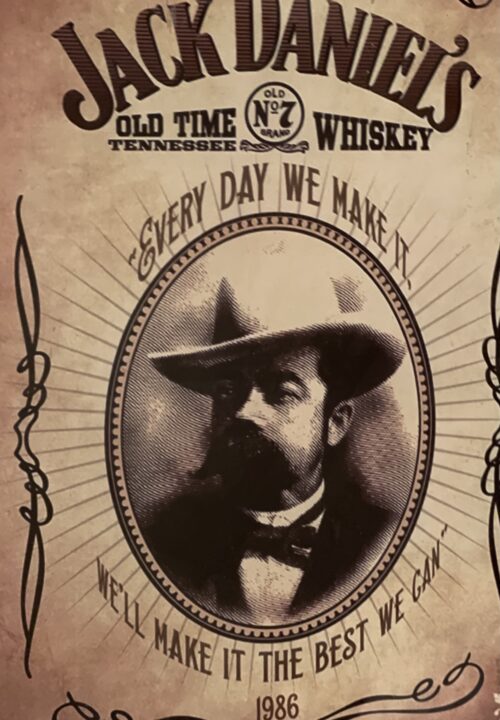
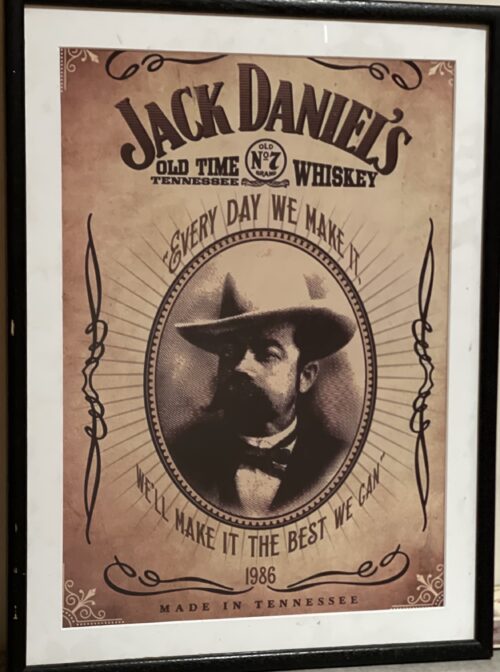


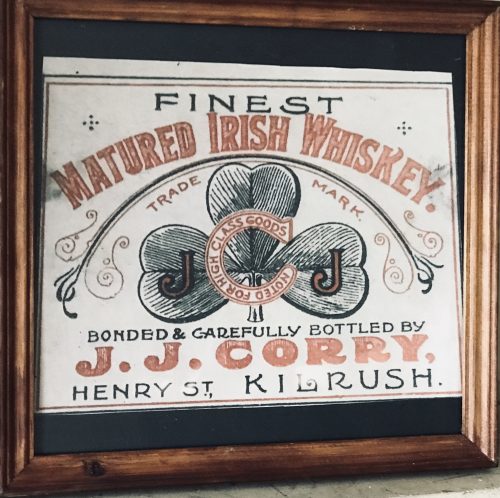
Kilrush,Co Clare was synonymous in the 1800s with a renowned whiskey bonder called J.J. Corry. J.J. was an innovator and a man before his time. His little shop at 63 Henry St. Kilrush was a key part of the local community and the only place where you could buy J.J.'s pride whiskey, "Corry's Special Malt." It was available by the glass for 3 pennies or by the jar.










J.J. was a true entrepreneur and innovator, born on a farm close to our brand home. Because he was not the first born son he was forced to make this own way in the world. We know that he dabbled in auctioneering before he set up his shop in 1890. Once he acquired the premises, and, after marrying the girl from the pub next door, he immediately set about developing his own brand. The town of Kilrush was a busy international port in the 1890s and J.J. would have purchased goods from all over the world directly from the ships’ Captains fresh from their travels. He sold tea from India, Rum from the Caribbean, Wine from France and Port from Portugal in addition to musical instruments, guns, ammunition and bicycles. As well as a pillar of the community, J.J. was also a true renaissance man and an early adopter of technology. As the social secretary of the town cycling club he even went as far as inventing his own bicycle, ‘The Gael’, after which we named our first whiskey. Most of all, J.J. was known for his hospitality and of course, his whiskey.
There was a time when every town in Ireland had its own particular flavour of whiskey. The Golden Age of Irish Whiskey (the late 19th century) saw hundreds of distilleries operating on the Island of Ireland. Most did not have their own brands of whiskey at that time, rather the distilleries simply made their whiskey and sold it wholesale to the Bonders. Bonders would have been jacks of all trades, the publicans, grocers, mercantile owners. They would travel to their local distillery with the empty barrels they’d have from their pub trade, fill them up with new make spirit and then cart them home and store them for ageing and blending. This business model was extremely accessible as there was no expense in building or running a distillery, which meant that there were Whiskey Bonders in every town across Ireland. Because so much of whiskey's flavour comes from the barrel in which it is aged in and from the climate where that barrel is stored, this meant that there was huge variety of regional flavours within Irish Whiskey. The Irish Whiskey industry collapsed in the early 1900's and with it came the closure of all but 4 distilleries in Ireland. Those distilleries since bought by multinational organisations have made almost all the Irish Whiskey produced ever since. They created individual whiskey brands and turned off the tap to Grocers thereby shutting down the practice of Whiskey Bonding.

 Origins:Kilmaley Co Clare Dimensions : Glazed
Origins:Kilmaley Co Clare Dimensions : Glazed 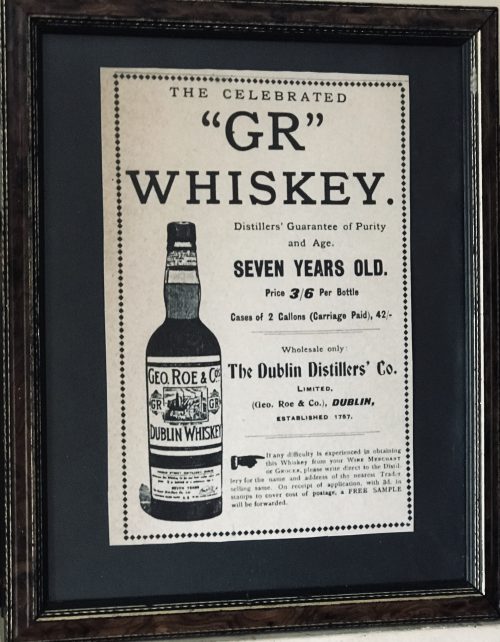


 By 1832, George Roe had inherited both of these plants which were near to each other. George continued their expansion and leased additional premises in Mount Brown, which were used as maltings, kilns, and warehouses.By 1827, output of the Thomas Street Distillery was reported as being 244,279 gallons. George Roe’s two sons, Henry and George, succeeded to the ownership in 1862, by which point the firm was large and prosperous, and the Roes a family of wealth and influence. So much so that in 1878, the Roes could afford to donate £250,000, a very large sum in those days, to the restoration of Christ Church Cathedral in Dublin, and were knighted for their efforts.The Golden Age of Irish Whiskey was drawing to a close. The heritage of Irish whiskey including the story of George Roe distillery’s fate was sealed. A series of adverse trading conditions including global challenges such as prohibition, the 1916 Uprising, the UK’s trade embargo enforced on Ireland, sadly closed the distillery. But some stories don’t end…
By 1832, George Roe had inherited both of these plants which were near to each other. George continued their expansion and leased additional premises in Mount Brown, which were used as maltings, kilns, and warehouses.By 1827, output of the Thomas Street Distillery was reported as being 244,279 gallons. George Roe’s two sons, Henry and George, succeeded to the ownership in 1862, by which point the firm was large and prosperous, and the Roes a family of wealth and influence. So much so that in 1878, the Roes could afford to donate £250,000, a very large sum in those days, to the restoration of Christ Church Cathedral in Dublin, and were knighted for their efforts.The Golden Age of Irish Whiskey was drawing to a close. The heritage of Irish whiskey including the story of George Roe distillery’s fate was sealed. A series of adverse trading conditions including global challenges such as prohibition, the 1916 Uprising, the UK’s trade embargo enforced on Ireland, sadly closed the distillery. But some stories don’t end…
 The Dublin Distillers Co., Thomas Street Distillery was an Irish whiskey distillery located in Dublin, Ireland. At its peak, it was Dublin’s largest and most productive distillery and with an output of over 2 million gallons per annum, twice that of John Jameson’s acclaimed nearby Bow Street distillery.Alfred Barnard, a British author who visited most of the distilleries in the then United Kingdom and Ireland in the late 1880s, wrote that, at the time of his visit; “the Thomas Street Distillery may have been the largest whiskey distillery in the world and probably had the highest output of any whiskey distillery in the British Isles.” The distillery later entered into financial difficulties, and closed in 1926. Although most of the distillery buildings were demolished following its closure, a few were incorporated into the Guinness St. James’s Gate Brewery.
The Dublin Distillers Co., Thomas Street Distillery was an Irish whiskey distillery located in Dublin, Ireland. At its peak, it was Dublin’s largest and most productive distillery and with an output of over 2 million gallons per annum, twice that of John Jameson’s acclaimed nearby Bow Street distillery.Alfred Barnard, a British author who visited most of the distilleries in the then United Kingdom and Ireland in the late 1880s, wrote that, at the time of his visit; “the Thomas Street Distillery may have been the largest whiskey distillery in the world and probably had the highest output of any whiskey distillery in the British Isles.” The distillery later entered into financial difficulties, and closed in 1926. Although most of the distillery buildings were demolished following its closure, a few were incorporated into the Guinness St. James’s Gate Brewery.






 By 1832, George Roe had inherited both of these plants which were near to each other. George continued their expansion and leased additional premises in Mount Brown, which were used as maltings, kilns, and warehouses.By 1827, output of the Thomas Street Distillery was reported as being 244,279 gallons. George Roe’s two sons, Henry and George, succeeded to the ownership in 1862, by which point the firm was large and prosperous, and the Roes a family of wealth and influence. So much so that in 1878, the Roes could afford to donate £250,000, a very large sum in those days, to the restoration of Christ Church Cathedral in Dublin, and were knighted for their efforts.The Golden Age of Irish Whiskey was drawing to a close. The heritage of Irish whiskey including the story of George Roe distillery’s fate was sealed. A series of adverse trading conditions including global challenges such as prohibition, the 1916 Uprising, the UK’s trade embargo enforced on Ireland, sadly closed the distillery. But some stories don’t end…
By 1832, George Roe had inherited both of these plants which were near to each other. George continued their expansion and leased additional premises in Mount Brown, which were used as maltings, kilns, and warehouses.By 1827, output of the Thomas Street Distillery was reported as being 244,279 gallons. George Roe’s two sons, Henry and George, succeeded to the ownership in 1862, by which point the firm was large and prosperous, and the Roes a family of wealth and influence. So much so that in 1878, the Roes could afford to donate £250,000, a very large sum in those days, to the restoration of Christ Church Cathedral in Dublin, and were knighted for their efforts.The Golden Age of Irish Whiskey was drawing to a close. The heritage of Irish whiskey including the story of George Roe distillery’s fate was sealed. A series of adverse trading conditions including global challenges such as prohibition, the 1916 Uprising, the UK’s trade embargo enforced on Ireland, sadly closed the distillery. But some stories don’t end…
 The Dublin Distillers Co., Thomas Street Distillery was an Irish whiskey distillery located in Dublin, Ireland. At its peak, it was Dublin’s largest and most productive distillery and with an output of over 2 million gallons per annum, twice that of John Jameson’s acclaimed nearby Bow Street distillery.Alfred Barnard, a British author who visited most of the distilleries in the then United Kingdom and Ireland in the late 1880s, wrote that, at the time of his visit; “the Thomas Street Distillery may have been the largest whiskey distillery in the world and probably had the highest output of any whiskey distillery in the British Isles.” The distillery later entered into financial difficulties, and closed in 1926. Although most of the distillery buildings were demolished following its closure, a few were incorporated into the Guinness St. James’s Gate Brewery.
The Dublin Distillers Co., Thomas Street Distillery was an Irish whiskey distillery located in Dublin, Ireland. At its peak, it was Dublin’s largest and most productive distillery and with an output of over 2 million gallons per annum, twice that of John Jameson’s acclaimed nearby Bow Street distillery.Alfred Barnard, a British author who visited most of the distilleries in the then United Kingdom and Ireland in the late 1880s, wrote that, at the time of his visit; “the Thomas Street Distillery may have been the largest whiskey distillery in the world and probably had the highest output of any whiskey distillery in the British Isles.” The distillery later entered into financial difficulties, and closed in 1926. Although most of the distillery buildings were demolished following its closure, a few were incorporated into the Guinness St. James’s Gate Brewery.







The ballad is named after a crossroads between Ennis and Tulla in east Clare, the site of a centuries-old horse fair held every June. In 1870 a young man from the locality, Michael Considine, bade farewell to his sweetheart Mary McNamara and left for the US. He hoped to earn sufficient money to enable her to join him.
However, he died in California in 1873. Before his death he wrote a poem dedicated to Mary which he posted to his six-year-old nephew, John, back home.
Seventy years later McMahon was given the words at a house party. His singing of the ballad was warmly received by those in attendance, who included the author’s nephew, then an elderly man.
Many singers have recorded the ballad, but McMahon insisted his was the authentic version. He told The Irish Times in 2006: “Nowadays the song is not sung correctly. Many singers put words that are not in it [at] all, singing stuff like ‘Johnny, I love you still’. There’s no ‘Johnny’ in that song.” The late writer Bryan MacMahon was an early admirer of his namesake’s talent and had high praise for his ability as a performer and entertainer.
Singer Maura O’Connell warmed to Robbie McMahon’s “great big personality”, and said that he made Spancil Hill his own.
Born in 1926, he was the third youngest of 11 children, one of whom died in childhood, and grew up on his father’s farm in Clooney, near Ennis. There was music in the family, and all the children sang. Young Robbie was something of a mischief-maker, hence the title of an album he recorded later in life – The Black Sheep.
He began singing in public at the age of 18, and went on to win 16 all-Ireland titles at fleadhanna around the country. In the 1950s, 1960s and 1970s he toured Britain and the US with a troupe of traditional musicians under the auspices of Comhaltas Ceoltóirí Éireann.
As a songwriter, he is best known for the Fleadh Down in Ennis, which celebrates the 1956 all-Ireland fleadh cheoil. Other compositions include Come on the Banner, the Red Cross Social and the Feakle Hurlers, in honour of the 1988 Clare county champions.
A lilter, he was renowned for his performance of the Mason’s Apron, in which he simulated the sound of both the fiddle and accompanying banjo.
Possessed of a store of jokes, ranging from the hilarious to the unprintable, he was as much a character as a singer and was more comfortable with the craic and banter of casual sessions than with formal concerts.
He was the subject of a film documentary Last Night As I Lay Dreaming. Clare County Council hosted a civic reception in his honour in 2010, and he was the recipient of the Fleadh Nua Gradam Ceoil in 2011.
He is survived by his wife Maura, daughters Fiona, Noleen and Dympna and son Donal.




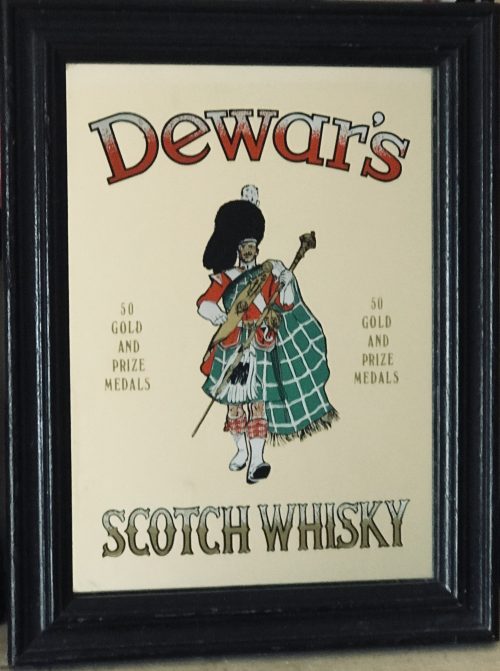
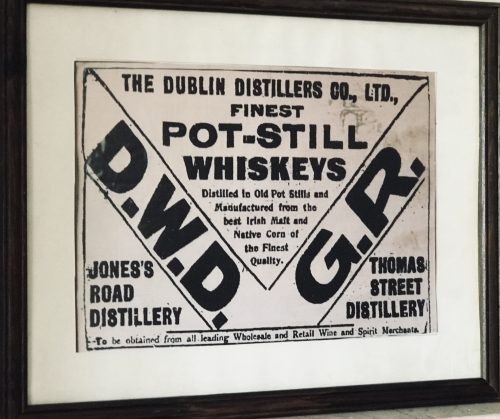


 The young John Brannick soon demonstrated a natural flair for the craft of whiskey-making. These early years, working within the hallowed halls of the John’s Lane Distillery, laid the foundations for his later exploits within the industry. It wasn’t long before the other great distilleries took note of his growing reputation and in 1852 George Roe & Sons enticed Brannick to join the House of George Roe & Co with the promise that he would some day become a Master Distiller.After nearly 20 years of perfecting his craft with the House of Roe, Brannick had reached the illustrious position of Master Distiller. His reputation amongst the great distilleries of Dublin was now firmly established, but his ambitions didn’t end there. Brannick had long harboured a burning desire to build the finest distillery in the world, and in 1870, having secured the necessary backing, he resigned his position and struck out on his own, establishing the Dublin Whiskey Distillery Company Limited. DWD.For the next two years Brannick worked on a revolutionary design for his distillery. A site was chosen, less than a mile north of Dublin’s city centre, on the banks of the River Tolka, and construction started on 22 July 1872 Exactly one year later, distillation began with the preparation of the first ever DWD wash. Meanwhile, with work on the great distillery underway, Brannick finally fulfilled another long-standing promise and married his sweetheart Mary Hayes on 26 January 1873.
The young John Brannick soon demonstrated a natural flair for the craft of whiskey-making. These early years, working within the hallowed halls of the John’s Lane Distillery, laid the foundations for his later exploits within the industry. It wasn’t long before the other great distilleries took note of his growing reputation and in 1852 George Roe & Sons enticed Brannick to join the House of George Roe & Co with the promise that he would some day become a Master Distiller.After nearly 20 years of perfecting his craft with the House of Roe, Brannick had reached the illustrious position of Master Distiller. His reputation amongst the great distilleries of Dublin was now firmly established, but his ambitions didn’t end there. Brannick had long harboured a burning desire to build the finest distillery in the world, and in 1870, having secured the necessary backing, he resigned his position and struck out on his own, establishing the Dublin Whiskey Distillery Company Limited. DWD.For the next two years Brannick worked on a revolutionary design for his distillery. A site was chosen, less than a mile north of Dublin’s city centre, on the banks of the River Tolka, and construction started on 22 July 1872 Exactly one year later, distillation began with the preparation of the first ever DWD wash. Meanwhile, with work on the great distillery underway, Brannick finally fulfilled another long-standing promise and married his sweetheart Mary Hayes on 26 January 1873.



“The extraordinary story of the ‘Finest Whiskey in the World’, a tale of one man’s vision, gloriously realised, only to be crushed by history and destroyed in a very Irish betrayal.” Tomas – DWD Brand Ambassador
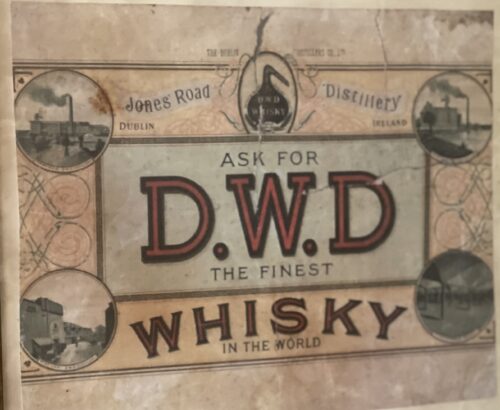
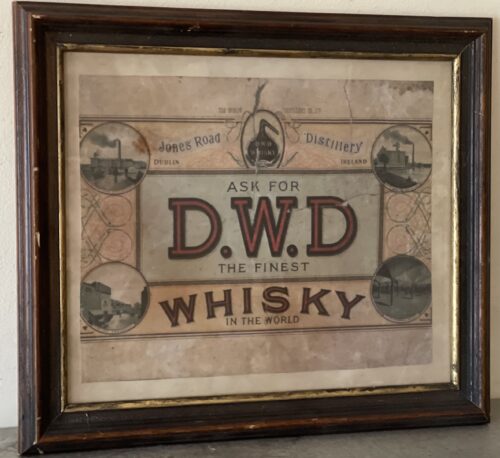


 The young John Brannick soon demonstrated a natural flair for the craft of whiskey-making. These early years, working within the hallowed halls of the John’s Lane Distillery, laid the foundations for his later exploits within the industry. It wasn’t long before the other great distilleries took note of his growing reputation and in 1852 George Roe & Sons enticed Brannick to join the House of George Roe & Co with the promise that he would some day become a Master Distiller.After nearly 20 years of perfecting his craft with the House of Roe, Brannick had reached the illustrious position of Master Distiller. His reputation amongst the great distilleries of Dublin was now firmly established, but his ambitions didn’t end there. Brannick had long harboured a burning desire to build the finest distillery in the world, and in 1870, having secured the necessary backing, he resigned his position and struck out on his own, establishing the Dublin Whiskey Distillery Company Limited. DWD.For the next two years Brannick worked on a revolutionary design for his distillery. A site was chosen, less than a mile north of Dublin’s city centre, on the banks of the River Tolka, and construction started on 22 July 1872 Exactly one year later, distillation began with the preparation of the first ever DWD wash. Meanwhile, with work on the great distillery underway, Brannick finally fulfilled another long-standing promise and married his sweetheart Mary Hayes on 26 January 1873.
The young John Brannick soon demonstrated a natural flair for the craft of whiskey-making. These early years, working within the hallowed halls of the John’s Lane Distillery, laid the foundations for his later exploits within the industry. It wasn’t long before the other great distilleries took note of his growing reputation and in 1852 George Roe & Sons enticed Brannick to join the House of George Roe & Co with the promise that he would some day become a Master Distiller.After nearly 20 years of perfecting his craft with the House of Roe, Brannick had reached the illustrious position of Master Distiller. His reputation amongst the great distilleries of Dublin was now firmly established, but his ambitions didn’t end there. Brannick had long harboured a burning desire to build the finest distillery in the world, and in 1870, having secured the necessary backing, he resigned his position and struck out on his own, establishing the Dublin Whiskey Distillery Company Limited. DWD.For the next two years Brannick worked on a revolutionary design for his distillery. A site was chosen, less than a mile north of Dublin’s city centre, on the banks of the River Tolka, and construction started on 22 July 1872 Exactly one year later, distillation began with the preparation of the first ever DWD wash. Meanwhile, with work on the great distillery underway, Brannick finally fulfilled another long-standing promise and married his sweetheart Mary Hayes on 26 January 1873.



“The extraordinary story of the ‘Finest Whiskey in the World’, a tale of one man’s vision, gloriously realised, only to be crushed by history and destroyed in a very Irish betrayal.” Tomas – DWD Brand Ambassador